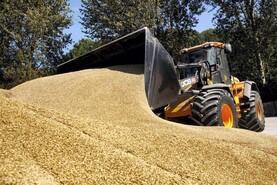As we slip quietly from December into January let us begin by wishing all our readers a happy and successful new year. In saying this we continue to wish for that elusive combination of good yields and good prices with minimal input price pressure.
While there are unlikely to be planting opportunities for at least another few weeks, now is the time to sort out in your head what Plan A is for you. This is important against a background where native certified seed supply will be very tight if all the land not planted in the autumn will need seed of spring varieties to fill that gap.
It seems likely that we may be short of at least 10,000ha of spring cereal seed so we need to see a lot of the area not planted with winter wheat last autumn sown to that crop before the end of February. If we could get 10,000 to 20,000ha of winter wheat planted in these two months we might get out with native seed, as suitable imported seed could be very difficult to source.
In saying this it is also important to know the likely impact of spring planting on individual wheat varieties. Late maturity is an inevitable consequences of spring planting and this could make another problem if one’s entire crop was late maturing next harvest. But a late maturing variety among a few earlier ones could be useful to spread workload and harvest.
There are also many fields already planted in winter crops where the headlands are not yet sown. Serious consideration might be given to not planting these to a crop but rather to put them down to a catch crop in spring when the pressure is off. This would help to repair the damage caused during harvest and planting. This could prove to be the most profitable option for these areas in the medium to long term.
Where possible, one should also try to keep a good rotation intact as this is important for profitable production. It seems likely that certified seed of beans will be scarce, adding further to the pressure on cereal seed availability as well as break crop seed availability.
Spring oilseed rape provides an option for those who cannot get bean seed and it allows a later planting date depending on how the spring unfolds.
Having one’s nutrient and chemical records in place is an important part of modern farming as problems can lead to BPS payment penalties. A good set of chemical records will show the stock carried into the season, the purchases and the closing stocks. The records should also account for where the sprays were used, and the rates multiplied by the hectares should multiply out to the difference between purchases plus opening stocks minus closing stocks for every product.
If land continues to soak there may be opportunity to get some ploughing done. This could be a good help come spring but avoid ploughing where conditions are not yet suitable.






 This is a subscriber-only article
This is a subscriber-only article










SHARING OPTIONS: